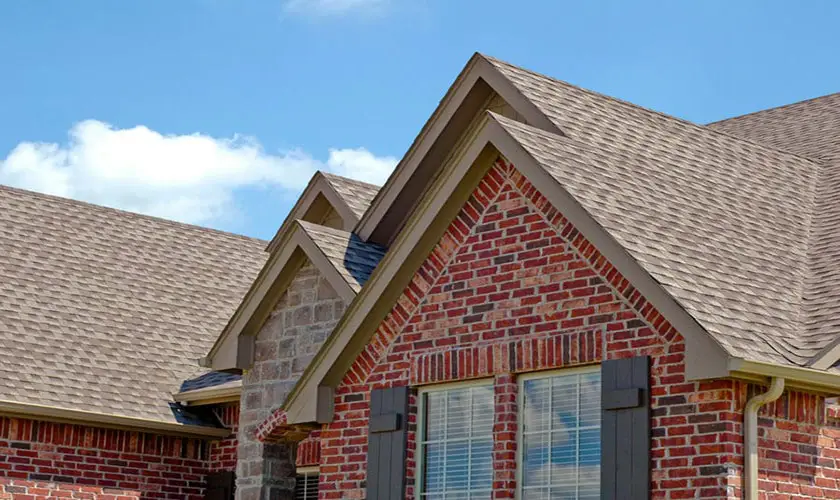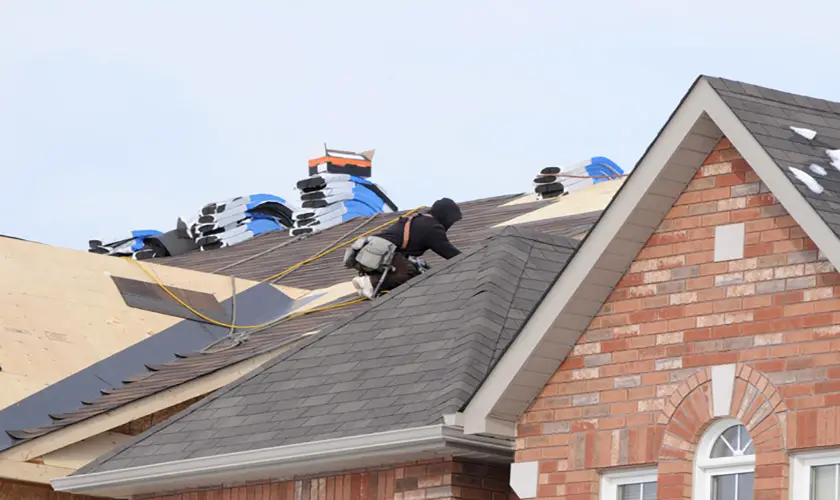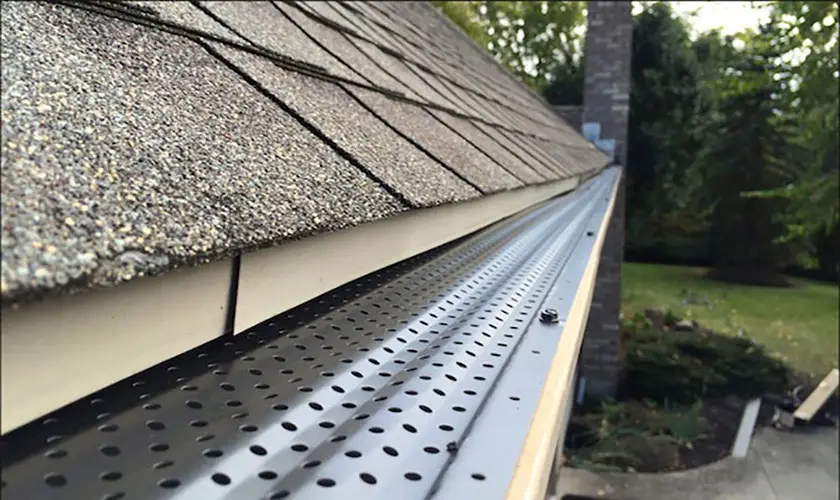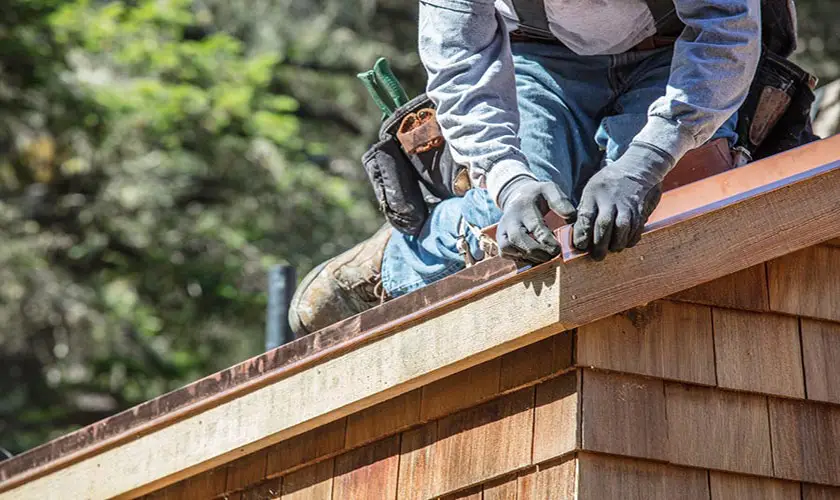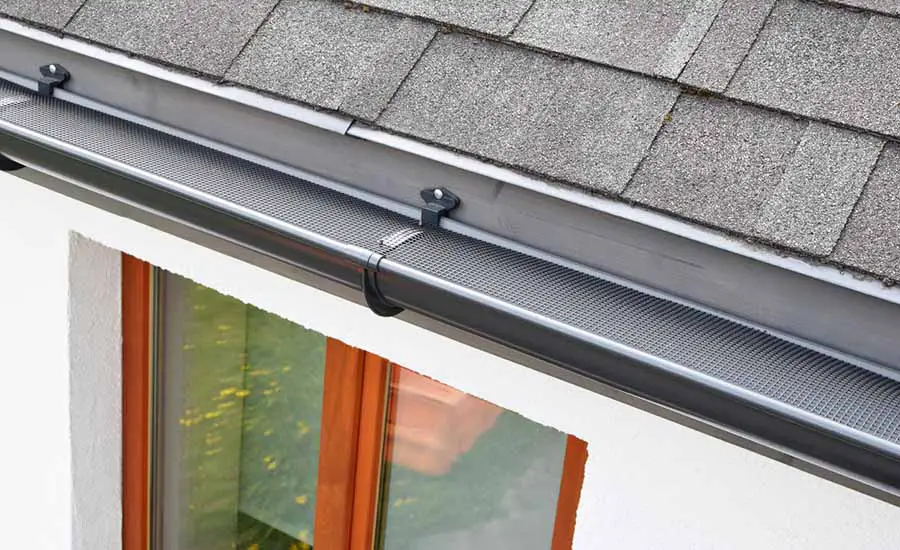
Gutters are challenging to clean. You have to get up on a ladder, dig out the debris, and clean the gutters from any mud. This process is arduous. Fortunately, there is a solution in the form of gutter guards. Though many gutter guards will not stop all the debris from entering your gutter, it will at least reduce the time you spend cleaning it. But where do you install them?
Many excellent gutter guards call for installation under the first row of shingles, but it is usually not the best option. Installing gutter guards under shingles breaks the roof’s water-tight barrier and can cause water damage. It is typically better to install gutter guards on top of shingles.
Read on to discover how you install gutter guards under your shingles and what you might want to know about them.
Recommended Reading: Are Gutter Guards Worth It or a Waste of Money? We Ask the Pros
Do Gutter Guards or Leaf Filters Go Under Shingles?
As a general rule, for any roof, you should not need to lift your roof shingles to put a leaf filter or gutter guard under your shingles. If you do this, bumps and cracks might form on the shingles, allowing water into the roof. More water will get under the shingles if your roof has a valley.
However, if you need to raise the shingles slightly to get a leaf filter on the gutter, you should lift it only as far as necessary. If you elevate them too much, there will be a pocket where water can get in and cause damage directly to the roof. You will not install the guards correctly if you don’t raise them far enough.
Here are some other things that shouldn’t be done to your roof while installing leaf filters:
- Nail into your roof.
- Try to fit a leaf filter or gutter guard the wrong size.
- Install gutter guards with large holes, as the product will be ineffective.
How Far Down Should Gutters Be From Shingles?
The gutters should be installed against the edge of the fascia and extend 3″ to 4″ past the shingles. The problem with many roofs is that the shingles and the gutter sometimes meet with barely an inch to spare. Many flat roofs or roofs with a steep incline or valley will not have a sufficient gap to place gutter guards without interfering with the shingles.
The shingles and gutter are too close if there isn’t a space of about an index finger between them. You will not be able to attach the guard directly to the gutter. Instead, you must put the gutter guard under the first row of shingles.
Putting the gutter guard under the first row of shingles elevates them off the roof more than when installed. This elevation allows water to sneak in under the shingles. When you see mounds or bumps on the shingles, the shingles were not pressed firmly back in place after adding the gutter guard, and there is now water damage under the shingles.
How To Install Gutter Guards Under Shingles
You would not install gutter guards under your roof shingles in an ideal world, but on top of them or straight on the gutter. However, if you do need to install gutter guards under your shingles, you should use the following types of gutter guards:
- Screen Gutter Guards
- Surface Tension Guards
- Fine Mesh Gutter Guards
Follow these steps to install gutter guards under your shingles:
- Slide the first half of the gutter guard evenly through the bottom layer of shingles and underlayment
- Be careful not to dislodge or loosen the shingles
- Keep it as flat as possible so water can still flow
- Put the other half of the gutter guard under the lip of the gutter
- Trim at the end to make sure it is the correct length
How to Install Different Types of Gutter Guards
You should consider their material composition before buying and installing your gutter guards. The material is crucial as it will determine how durable the gutter guards are and how much debris can accumulate before you need to clean it off.
Three materials make up the composition of gutter guards:
| Material | Characteristics |
|---|---|
| Aluminum | It can take a beating from debris and is usually the best option |
| Metal Mesh | Will protect your gutters from large debris and does not take granules from roofs out of the gutter |
| Plastic or Foam | Typically cheap, ineffective, and not ideal in most situations |
Once you have determined the type of material you will buy, the next step is to consider the types of gutter guards and why your gutter needs to be protected. Some guards are better used to prevent birds from landing in the ditch, while others are perfect for preventing debris from entering the gutter.
There are five types of gutter guards, and each has its ideal installation methods:
1. Brush Guards
- Cut the brushes to fit the length of your gutters
- Bend the brush wire around curves and slopes
- Ensure the bristles are attached to the bottom of the gutter and go around the whole length.
2. Foam Guards
- Cut the guards to fit your roof’s contours
- Place the guards under the lip of the gutter
- The guards should rest under the rim of the gutters
3. Mesh Guards
- Put the guards under the lip of the gutter
- Attach any screws (you might have to drill them in)
- Snap the end of the guard over the gutter or screw it in
- The guards should not be too tight, or the gutters can suffer damage, such as bending and warping from the pressure
- Create an end cap to prevent animals from getting into the trenches if necessary
- The gates should not bend in the center
4. Micromesh Guards
You should follow the same instructions as mesh guards.
Some micromesh brands, such as EasyOn, require you to slip the guard under the shingles. However, if you screw it to the fascia, it makes the gutter stronger. These are the best types of guards if you use the right brand.
5. Perforated Guards
- Ensure the size of the guards matches the size of your gutters
- Put the edge of the guard against the grain of the gutters
- Using screws or other adhesives, put the guards into place
- The guard should be cut on the diagonal to fit corners
- Make sure the guard is not pulling on the gutter to prevent damage
Another thing to check is the size of the holes. If it doesn’t look like rapidly moving water will be caught by the holes, you should not buy that gutter guard. A simple test is to lie the gutter guards on a flat surface and turn your garden hose to maximum power without the nozzle.
If the water does not enter the holes, your gutter guard will not do the job. The idea is to prevent debris from entering the gutter while draining water through the channel.
What are the Best Gutter Guards Available?
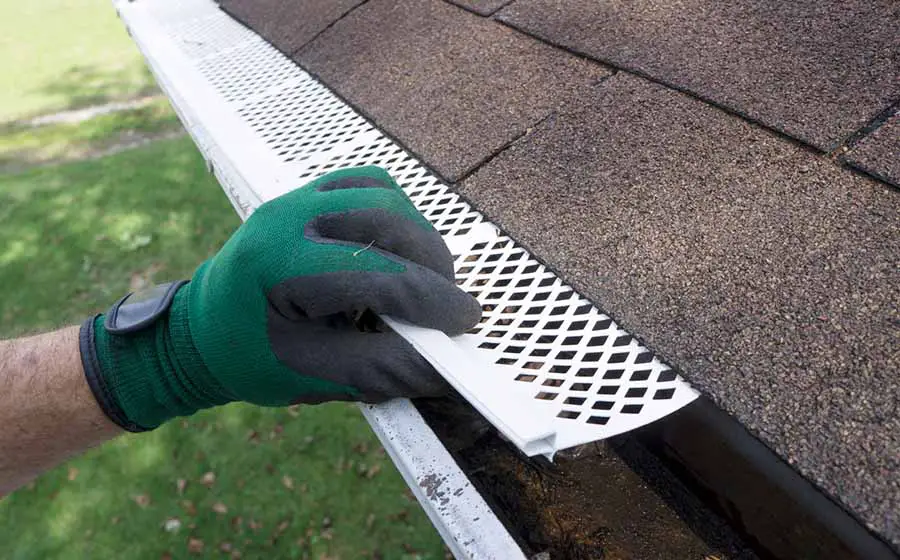
There are many different gutter guards available on the market. It’s best to decide which gutter guards to buy based on overall costs, the pros, and the cons of installing these gutters. We reviewed 9 of the most popular gutter guards:
| Gutter Guard | Pros | Cons |
|---|---|---|
| Leaf Filter Gutter Protection | Micro-Mesh gutter guard | You will need to blow debris off of the guards to prevent algae growth |
| GutterStuff GS10957 Gutter Filter | $5.99 per 4 feet, which is a reasonable price | Will not prevent debris from entering the gutter and degrades under continued sun exposure |
| E-Z Quick Gutter Guard | Snaps into place | You might need to cut it with clippers to fit your gutter |
| Raptor Gutter Guard | Cleaning is easy, long lifespan, and is excellent at catching debris, including pine needles | Dirt will accumulate on the front end of the gutter and is susceptible to moss buildup |
| Amerimax Home Products 636025 Guard | Bigger holes to minimize water flow No fasteners required | Hard to install You might need to trim the wire to fit it to the gutter |
| Amerimax Home Products 86670 Gutter Guard | Lifetime warranty, mesh filter, insect-resistant, filter out tiny particles | Some water ends up washing over the guards and missing the gutter |
| FlexxPoint Gutter Cover System | Easy to remove | You will still need to clean your gutter |
| Frost King VX620 Plastic Gutter Guard | Easy to cut | Can be knocked off by ice |
| A-M Aluminum Gutter Guard | Excellent at capturing a large amount of water, no matter the roof slope | Installation on turns in your gutter can be tricky |
Is the LeafFilter Gutter Guard Brand Any Good?
The LeafFilter brand is not as good as it claims. It claims that “you’ll never have to clean your gutters again,” but many consumers find them overpriced. Its sales are also gimmicky. Consumers filed many complaints against the company at the Better Business Bureau. It will also gather debris and be a shelf you must clean off.
The biggest problem that the LeafFilter has is in the winter when the snow melts. Water overflows from the gutters and then pours down below before refreezing. While the company claims that this is due to misalignment of their product, the fact remains that this is a slip hazard and may expose you to civil suits if someone slips on the ice and injures themselves.
We suggest that you use the following brands as alternatives:
- LeafSolutions has accessories for different roof shapes (such as an inside corner) and channels to prevent small debris from entering the gutter.
- LeafGuard is also a good brand because it becomes part of the gutter upon installation making it well-attached.
- LeafLock has a micromesh that catches larger debris. The only disadvantage is that long pine needles can go through the filter, ending in the gutter.
Final Thoughts
Whether installing gutter guards under shingles or snap-on guards to cover the gutter, aluminum is the best material for gutter guards. Micromesh is the best type of guard to use. However, some gutter guards will underdeliver or omit glaring errors. Use your better judgment when presented with these claims, and remember, if it sounds too good to be true, it probably is.
Finding the proper gutter guards for your house will make a huge difference since you will spend less time cleaning your gutters and doing important things.




